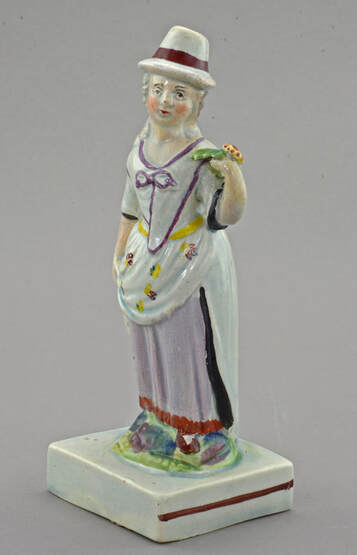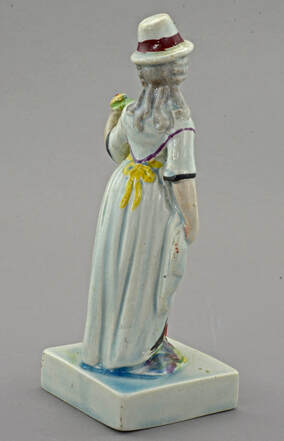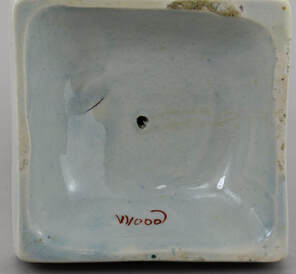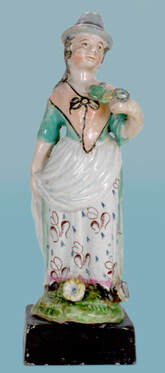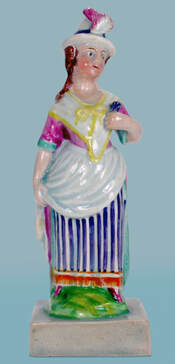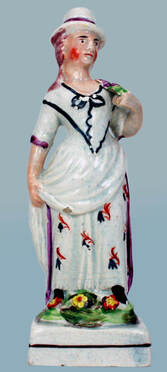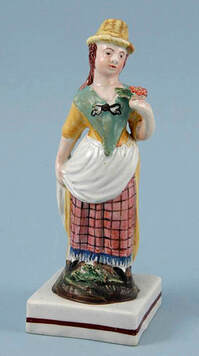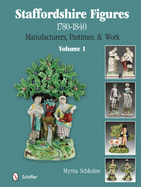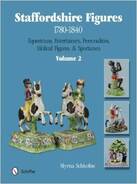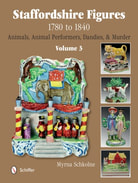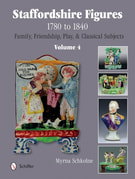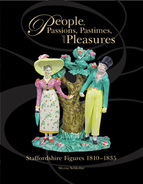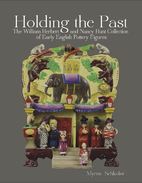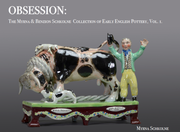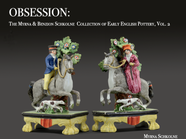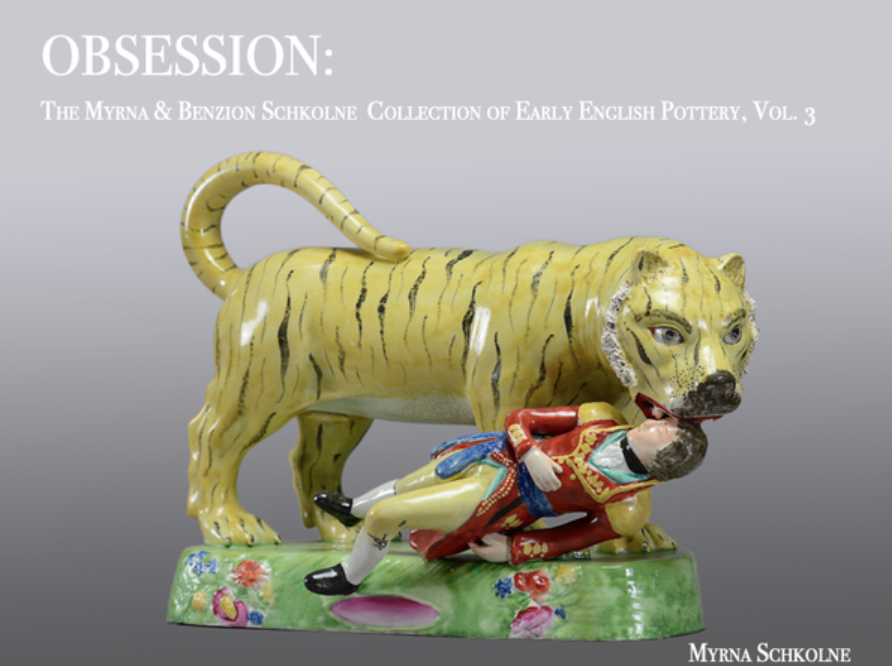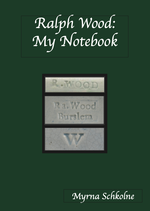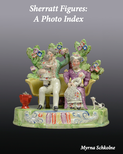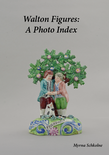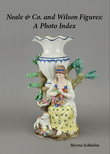Experienced collectors ALWAYS immediately turn over a figure to scrutinize the underneath, which can reveal a wealth of nuanced information. In this case it delivered an added surprise: an unrecorded mark!
The combination of rainbow colors on the mound beneath the figure is very, very typical of Ralph Wood, and I have until now only seen mounds colored thus on figures with a Ralph Wood attribution
Also, the lady's face is painted in a typical, delicate Ralph Wood style. If you organize figures into groups by their pot bank of origin, there is a striking family resemblance within each group. A Neale face is very different from a Lakin & Poole face or a Ralph Wood face. The difference sometimes is in the modeling, but it is very often in the decoration. Each manufacturer had a "house style" that painters followed.
By now we all know that when Ralph Wood's painters placed lines around bases, the lines banded three sides of each base, with the back typically left plain. On this figure, the line is on one side only. Make of it this what you will. Did the painter intend placing more lines? Did he get confused? Was it a Monday--a day that invariably started with a hangover? Who knows?
Then there is the manner in which the base was formed. Looked at from beneath, it has rounded internal corners. Nearly all Ralph Wood bases are formed in this manner, whereas the bases of figures made by Wood's contemporaries are usually formed differently.
And finally there is the mark itself. Ralph Wood consistently impressed the mark into the clay bodies of his figures, but this mark is painted. Wood's painters used tiny red letters to title very many figures, and the "Wood" mark is in tiny red letters. However, the letters are different to the "house style" used for Ralph Wood titles. Note the "W" consists of two Vs, and the "d" has a long curly handle.
What other Wood might have made this figure? The names of Enoch Wood and John Wood pop to mind. For about twenty years, a whacky theory credited them with making all the Ralph Wood figures---yes, even those with Ralph Wood's name impressed into their clay bodies! Fortunately, that theory has been resoundingly debunked, but museums that lack knowledgable curatorial staff (and updated libraries, it seems) persist in stupidly crediting Ralph Wood figures to Ralph's cousin Enoch Wood or to his brother John Wood. But there is no evidence that John Wood made any figures at all. Enoch Wood made figures, but they are in a very different style to the little lady in question.
Bottom line is that my heart tells me that this is a Ralph Wood figure. I would bet money on it if I could--and I am not a betting person. But my head must rule, and I admit that there is inadequate evidence for a water-tight attribution. I can't tell you how much time I have spent looking at her and pondering. She has added enormously to my collecting pleasure.
By the way, the molds for this figure, like other Ralph Wood molds, circulated in the Potteries for decades, and other potters made their own versions. Not one has a single Ralph Wood attribute.
